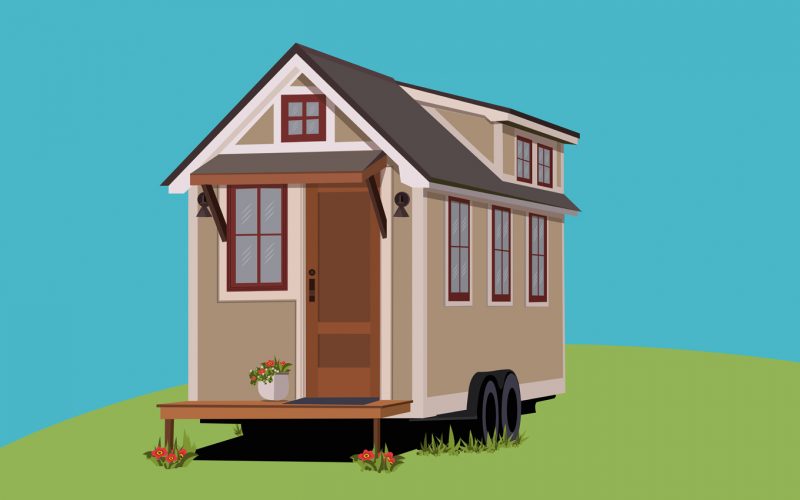
Shutterstock
It doesn’t take a lot of space or possessions to have a happy, healthy life. In some cases, owning a lot of stuff can detract from a person’s well-being or limit them financially. Even though tiny homes aren’t for everyone, for some individuals and families, they’re a gateway to a better life that also makes a difference for both people and planet.
It’s hard to pin down exactly what amount of square footage defines a true “tiny house” as opposed to simply a house one might describe as small compared to a large estate. As Yoda wisely states in Star Wars, “Size matters not. Judge me by my size, will you?” Tiny homes are focused more on intentional design and lifestyle rather than specific square footage, and it also matters how many people are living in one space. A tiny home for five people will be larger than a tiny home for one.
The most important element in a tiny home is meeting our human needs and wants with the most efficient use of space possible. And that trickles into our interpersonal relationships and financial health, defining a lifestyle more than the external appearance of a home. Suddenly, relationships are prioritized, and if they’re not nurtured, can quickly disintegrate or alternatively become strengthened as the inhabitants learn better ways to meet their own needs, communicate well, and support one another. Expensive experiences like travel can become part of a lifestyle that was once a bit short on amusement because of high rent or mortgage payments. Time seems to multiply when it only takes ten minutes to clean the entire house! Lifestyle changes are at the heart of the tiny house movement.
Some of those changes are sacrificial. There may be no room for precious heirlooms, or sentimental items, or a large wardrobe. Downsizing isn’t like Mary Poppins cleaning up the nursery with magic. Yet tiny homes are about as diverse as the people of all ages and backgrounds who choose to build or buy them for personal or environmental reasons. People can actually have easier, not harder, lives in a smaller house, if it enables them to achieve a goal or dream.
Some tiny homes are fancy and modern, with expensive fixtures. Some are rustic, and the design relies on a do-it-yourself mentality. They come in office or studio sizes that can be moved with a trailer, or permanent houses with foundations (and everything in between). They could look like a cabin or a spaceship, resemble a barn or have a psychedelic Lisa Frank style paint job. Many are made to resemble larger homes owned by the builders, for use by relatives. Some have beautiful bay windows and hot tubs included, while others are minimalist. With a smaller amount of house, one’s lifestyle can grow bigger and – hopefully – better.
Amanda Bancroft is a writer, artist, and naturalist building an off-grid cottage for land conservation on Mt. Kessler. She and her husband Ryan blog about their adventures and offer a solar-hosted online educational center on how to make a difference with everyday choices at: www.RipplesBlog.org.










